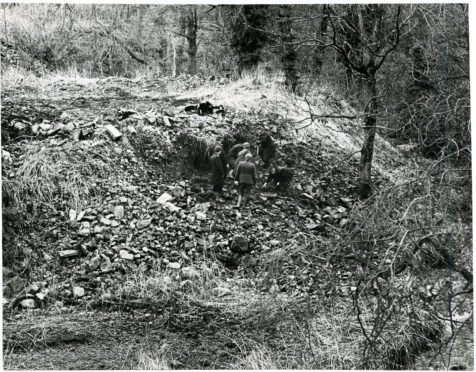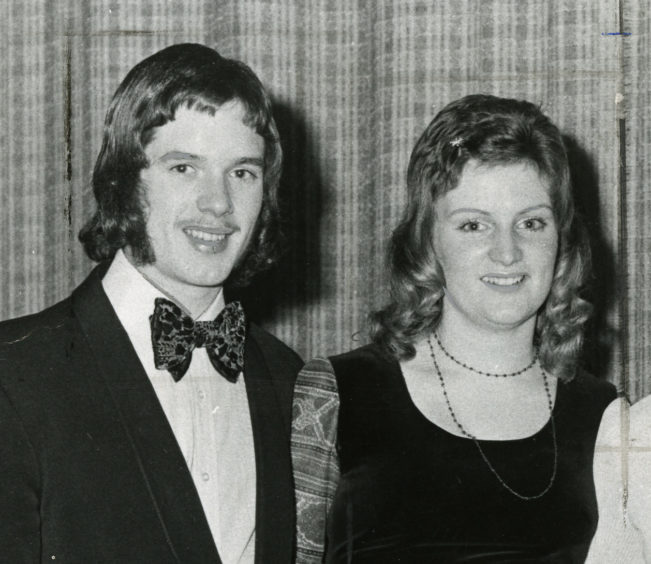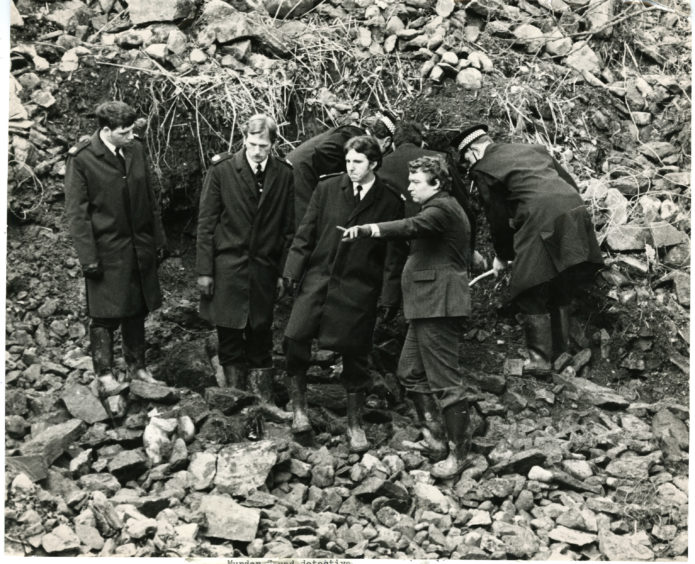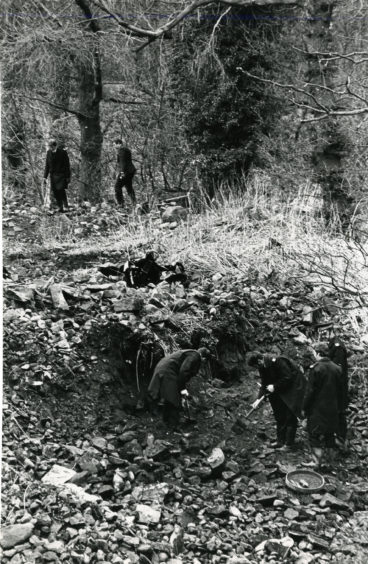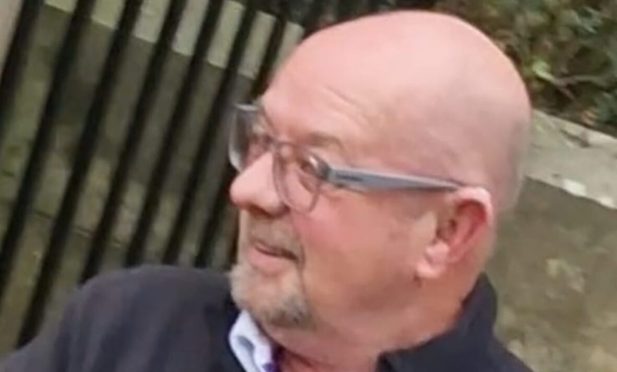She was the dead Dundee bride whose night-time ‘visit’ prompted a landmark murder appeal which made Scottish criminal history.
James ‘Baby Face’ Wilkie’s 19-year-old bride Helen went missing 45 years ago in February 1974 following a public row in a restaurant after their baby son’s christening.
The 17-year-old later claimed his wife vanished when he made an unscheduled stop at a public toilet on Riverside Drive while returning to collect their son from Wilkie’s parents in Longforgan.
Police treated the disappearance as a missing person case and there were apparent sightings of Mrs Wilkie in London, Dundee and other parts of Scotland.
Mrs Wilkie’s parents also received a Christmas card signed ‘Helen’ which had been posted in Dundee.
Wilkie eventually moved out of Dundee with his in-laws adopting their grandson.
Four years later her skeleton was found during the excavation of a tip in Carse of Gowrie in March 1978.
All clothing at the scene belonged to Mrs Wilkie except a blue tie worn by her husband at the christening.
Wilkie had told police he had taken the tie off at the reception, placing it in his wife’s handbag.
He was charged and eventually found guilty of murder by a Dundee jury in June 1978.
Wilkie was serving the first year of a life sentence when new evidence came to light.
The convicted murderer sat in the High Court in Edinburgh in January 1979 and heard a young Dundee housewife say she had seen and spoken to his wife three months after he was said to have murdered her.
The murder trial appeal – which started seven months after the conviction – was the first time since 1927 that permission had been given for fresh evidence to be heard which could have resulted in his release.
Former neighbour Valerie McCabe, 27, said she had been at home in Hill Street one night in 1974 when Mrs Wilkie came to the door.
She said Mrs McCabe was wanted on the Wilkie’s phone by Mr McCabe who had been attending a football match in Glasgow.
After speaking to her husband, Mrs McCabe said she put her head “round Mrs Wilkie’s living-room door’ to thank her for the use of the phone in the hall.
Questioned about her eyesight during the appeal hearing, Mrs McCabe said she could see quite well although she wore glasses.
But when shown a photograph of a woman friend of Wilkie’s who had stayed at the flat after Mrs Wilkie had disappeared, Mrs McCabe said the woman in the photograph could be Mrs Wilkie.
Lord Emslie eventually refused the appeal.
He said the evidence suggested Mrs McCabe “was not an observant woman”.
He said: “In my opinion, indeed, it is in the highest degree likely that an intelligent jury would have reached the conclusion without much difficulty that Mrs McCabe, although an honest witness, was quite mistaken in saying that she saw Helen Wilkie alive on the evening of May 18 1974.”
Wilkie was eventually freed in 1986 and settled into life as a JCB driver before he was killed in a road accident at the Pickletillum Inn between Leuchars and the Tay Bridge in 1996.
Appeal judge had “grave difficulties” in “accepting this hypothesis”
Lord Emslie said that Mrs McCabe saying it was Helen Wilkie she had seen on May 18 simply could not fit in with the statement by Wilkie himself two days after his wife vanished, and in further interviews with the police, and in his own evidence, that she had never been seen again and had never returned to the flat.
He said that if the young woman seen by Mrs McCabe was in fact Helen Wilkie, then Mrs Wilkie must have been murdered at a later date and there were “grave difficulties in the way of accepting this hypothesis”.
“The most important thing is that she was undoubtedly strangled by her husband’s tie,” he said.
“According to Wilkie’s own evidence he had worn it at the christening and took it off at the reception, placing it in his wife’s handbag.”
Lord Emslie said that it was difficult, if not impossible, to believe that Mrs Wilkie, having deliberately abandoned and cut herself off completely from her husband, would have continued to carry the tie in her handbag for months.
If she had done so how had the tie come to be used by her murderer if Mrs Wilkie had been killed some time after May 18?
